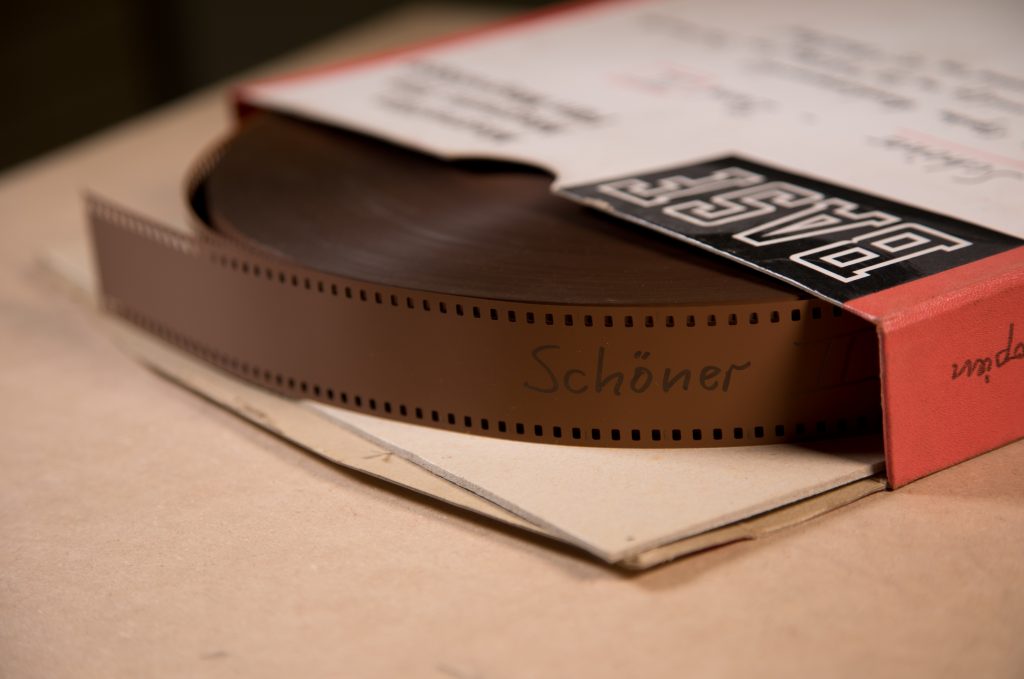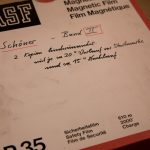Artefacts
35 mm 4-track tape
35 mm 4-track tape
These pictures show an audio tape modeled on the technology traditionally employed in film. As in professional 35 mm wide film, the tape is perforated on both sides. However, instead of storing an array of projectable frames, it is coated with magnetic material that enables the recording of sound. One such tape could be used to record four individual tracks, making it a multitrack technology. During preparations for the German pavilion at the Expo ’70 world fair in Osaka, Japan, the Technische Universität Berlin’s studio technology department was commissioned to create the technical and acoustical infrastructure. The spherical shape of the pavilion and the extensive use of music by Karlheinz Stockhausen were the two main factors that shaped the public image of Germany’s contribution to Expo ’70. Two Siemens 35 mm machines were used for the simultaneous playback of eight tracks. Only seven tracks were occupied by sound recordings, the remaining track being reserved for control signals regulating the spatial mixing of audio and the lighting.
The case and the tape in this picture bear handwritten titles “Schöner” and “Band II / 2 Kopien hintereinander” (“Tape II / 2 consecutive copies”). Presumably, this tape contains an electroacoustic piece created for the Osaka pavilion by the German composer Eberhard Schoener, one of the group of composers presented at the world fair. On Schoener’s personal website, the work created for Expo ’70 is described as a 15-minute modulation of the last chord of Beethoven’s Symphony No. 7.
Photographs of the German pavilion in Osaka, 1970
© 2015 – 2024 Humboldt-Universität zu Berlin









